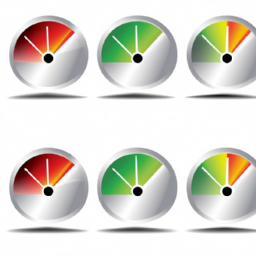
Technical Indicators: A Comprehensive Guide
Introduction
Technical indicators are widely used tools in the field of technical analysis. These indicators are mathematical calculations based on historical price and volume data, which help traders and investors make informed decisions about buying or selling assets. By analyzing past market data, technical indicators aim to predict future price movements and identify potential trading opportunities.
Types of Technical Indicators
Trend Indicators
Trend indicators help traders identify the direction of a price trend. They are used to determine whether the market is trending upwards (bullish) or downwards (bearish). Common trend indicators include Moving Averages, Average Directional Index (ADX), and Parabolic SAR.
Momentum Indicators
Momentum indicators measure the speed and strength of price movements. They help traders identify overbought or oversold conditions in the market. Popular momentum indicators include Relative Strength Index (RSI), Stochastic Oscillator, and Moving Average Convergence Divergence (MACD).
Volatility Indicators
Volatility indicators measure the degree of price fluctuations in the market. They assist traders in identifying periods of high or low volatility. Common volatility indicators include Bollinger Bands, Average True Range (ATR), and the Volatility Index (VIX).
Volume Indicators
Volume indicators analyze trading volume to assess the strength or weakness of a price trend. They help traders confirm the validity of price movements and identify potential reversals. Popular volume indicators include On-Balance Volume (OBV), Chaikin Money Flow, and Volume Weighted Average Price (VWAP).
How to Use Technical Indicators
Step 1: Choose the Right Indicators
There are numerous technical indicators available, but not all of them will suit your trading style or the assets you trade. It is important to research and understand the indicators you plan to use, considering their strengths, weaknesses, and compatibility with your trading strategy.
Step 2: Combine Indicators
Using multiple indicators can provide more robust signals and reduce false positives or negatives. However, it is crucial to avoid overloading your analysis with too many indicators, as this can lead to confusion and conflicting signals.
Step 3: Understand Indicator Signals
Each technical indicator generates specific signals that indicate potential buy or sell opportunities. It is essential to understand the interpretation of these signals and their implications for your trading decisions. For example, an RSI reading above 70 may suggest overbought conditions, while a reading below 30 may indicate oversold conditions.
Step 4: Combine Indicators with Price Action
Technical indicators should not be used in isolation. They should be combined with price action analysis to confirm signals and increase the probability of successful trades. Price patterns, support and resistance levels, and other chart patterns can provide valuable context to technical indicators.
Step 5: Practice and Backtest
Before relying on technical indicators in live trading, it is crucial to practice using them on historical data and backtest your strategies. This helps you gain confidence in the indicators’ effectiveness and understand their limitations.
Conclusion
Technical indicators are powerful tools that can assist traders in making informed trading decisions. However, it is important to remember that no indicator is foolproof, and they should be used in conjunction with other analysis techniques. By understanding different types of technical indicators and how to use them effectively, traders can enhance their trading strategies and improve their chances of success in the financial markets.